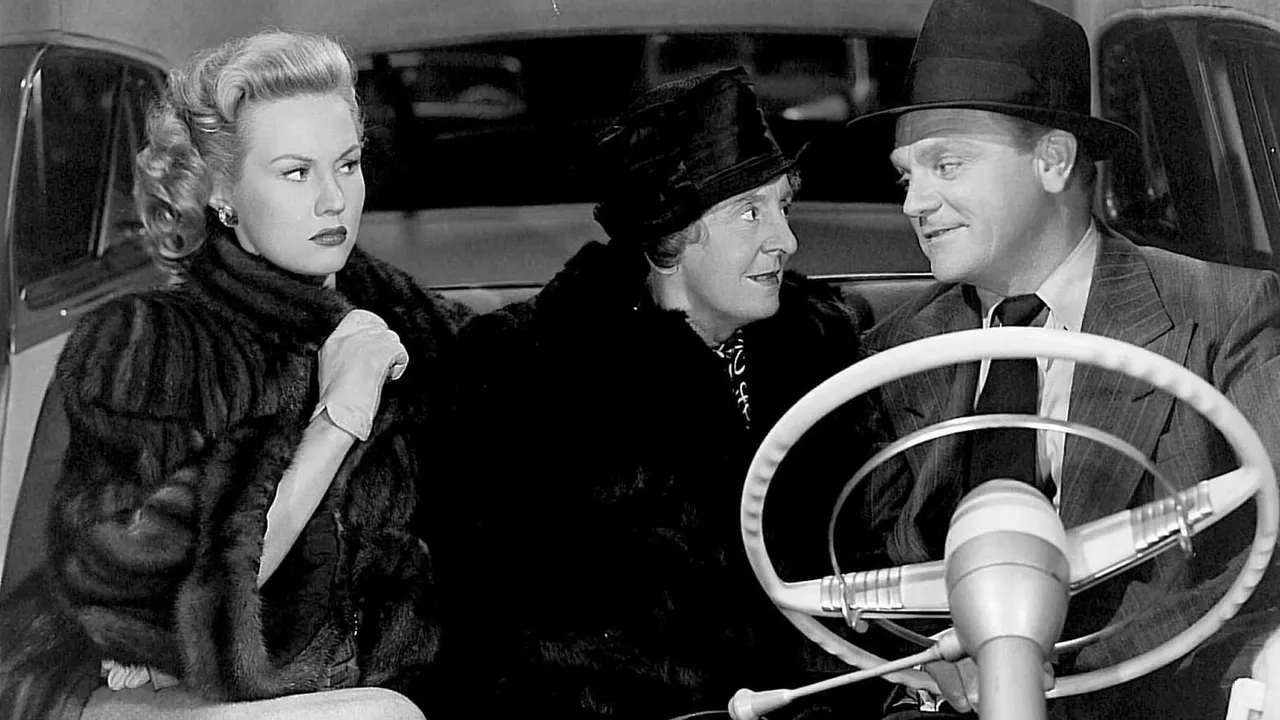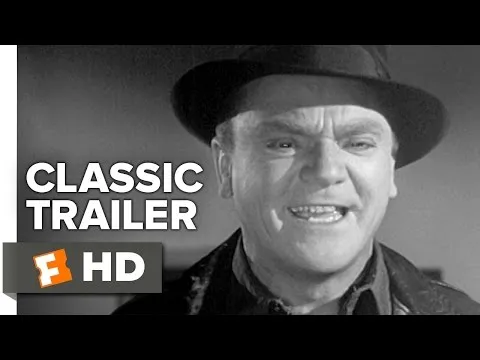
James Cagney became one of the most iconic actors of Classic Hollywood by playing gangsters in some of the most important gangster films of 1930s. By the end of the decade, however, he was quite tired of it and feared that he would be hopelessly typecast. So, he gave up on such roles and tried to switch his career towards different genres like musical or comedy. At the end of 1940s, however, he returned to the genre by playing another, albeit very different sort of gangster in White Heat, 1949 film directed by Raoul Walsh, which is considered one of his best performances.
While 1930s gangster films depicted crime as a direct or indirect consequence of the sudden impoverishment caused by the Great Depression, the plot of this film depicts the world immediately after World War II, from which the United States emerged as the only economic superpower and the US Dollar became the only relevant world currency. In the markets of impoverished Europe, dollars are paid for in gold, and that's why the currency shipments become the targets of unscrupulous and well-organised gangs like the one led by psychopathic Cody Jarrett (played by Cagney). Jarrett skilfully thwarts Treasury Department's efforts to catch him. In order to get an alibi for spectacular and bloody train robbery, he confesses to a petty crime he did not commit. The idea is simply to sit in prison for few years and collect the loot afterwards. However, Treasury Department has devised to plan to take him down. Hank Fallon (played by Edmond O’Brien), one of its agent, is given new identity of convicted criminal “Vic Pardo” and sent to prison where he would gradually gain Jarrett's trust and become his best friend. In the meantime, Jarrett's young wife Verna (played by Virginia Mayo) becomes involved with Jarrett's lieutenant Big Ed (Cochran) and decides to organize his murder in order to get hold of the loot.
White Heat reunited Cagney with Raoul Walsh, director with whom he had worked on The Roaring Twenties, another grand classic of gangster genre exactly a decade earlier. Walsh is considered one of the most successful and influential film makers in the first five decades of Hollywood and White Heat gives many examples of how such reputation was made. Walsh speciality was action and those kind of scenes represent the best part of this film - from the spectacular robbery at the beginning to the apocalyptic finale.
Another valuable aspect of the film is the script by Ivan Goff and Ben Roberts, based on the story by Virginia Kellogg. Unlike 1930s, this film doesn’t serve any political agenda attempts to explain crime and other forms of social pathology by pointing towards poverty and other social injustices. Instead, the script, while trying to explain the roots of Jarrett's evil, turns to psychoanalysis, which was quite fashionable in Hollywood at the time. Jarrett become criminal monster due to a pathological attachment to his overbearing mother, brilliantly played by Margaret Wycherly. Her performance was, of course, overshadowed by the brilliant Cagney who played one of the most memorable roles not only in his career, but in the history of film in general. Over the course of the film, his character undergoes multiple transformations - from a cold-blooded killer to a pathetic momma’s boy and, in the end, something resembling tragic anti-hero. Cagney also overshadowed Virginia Mayo, who excelled in her role as a simple gangster moll and Edmund O’Brien as “normie” government agent.
Walsh's film also differed from 1930s gangster films by reflecting the general mood of the USA at the time, which was, thanks to victory in war and end of Great Depression, more oriented towards future than to the present. This might be seen the final part of the film, which shows the authors’ fascination with modern technology. This is shown both through the final showdown being set in a cold, automated industrial facility where there are almost no people, and the authorities succeeding in catching gangsters through high tech equipment. But the grand explosive finale could also be interpreted as an authors’ comment on the very likely possibility that the rapid development of technology could lead to a nuclear apocalypse - something that in the early years of the Cold War began to haunt the American public, including Hollywood. While the film might look dated because of its black-and-white cinematography, it still retains its power and is quite worthy of the Cody Jarret’s famous finale phrase "top of the world".
RATING: 9/10 (++++)
_
Blog in Croatian https://draxblog.com
Blog in English https://draxreview.wordpress.com/
InLeo blog @drax.leo
InLeo: https://inleo.io/signup?referral=drax.leo
Unstoppable Domains: https://unstoppabledomains.com/?ref=3fc23fc42c1b417
Hiveonboard: https://hiveonboard.com?ref=drax y
Bitcoin Lightning HIVE donations: https://v4v.app/v1/lnurlp/qrcode/drax
Rising Star game: https://www.risingstargame.com?referrer=drax
1Inch: https://1inch.exchange/#/r/0x83823d8CCB74F828148258BB4457642124b1328e
BTC donations: 1EWxiMiP6iiG9rger3NuUSd6HByaxQWafG
ETH donations: 0xB305F144323b99e6f8b1d66f5D7DE78B498C32A7

